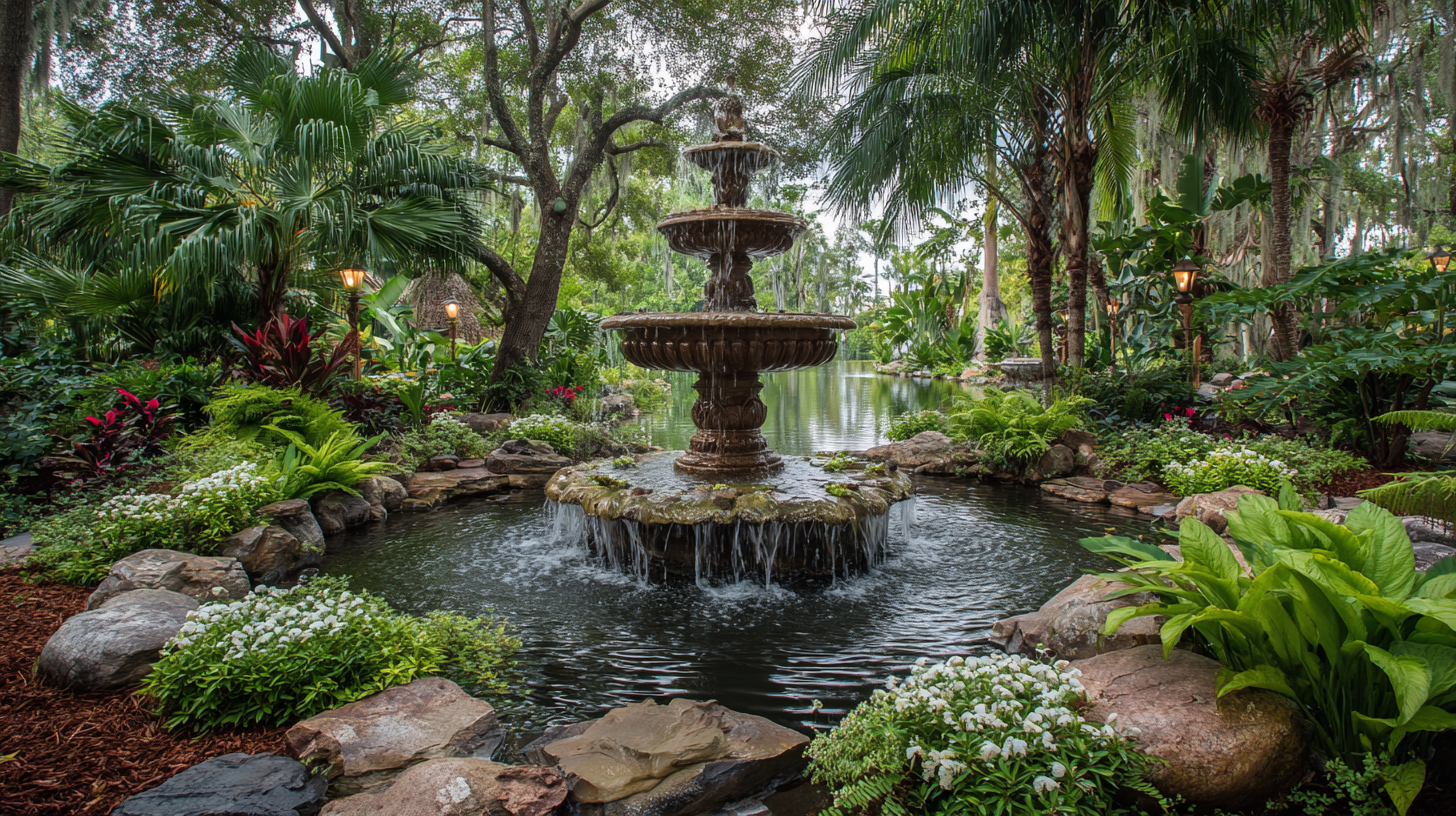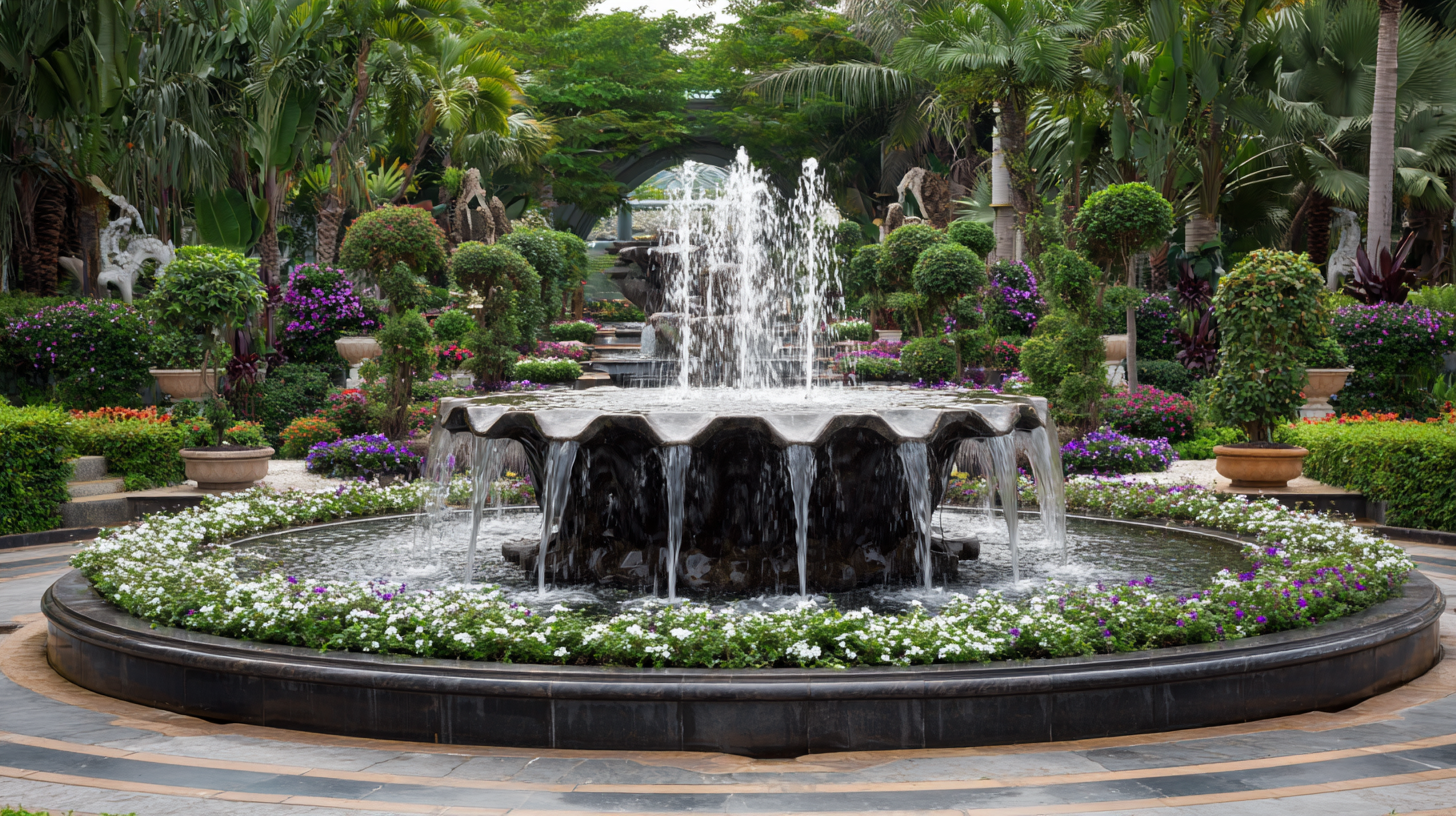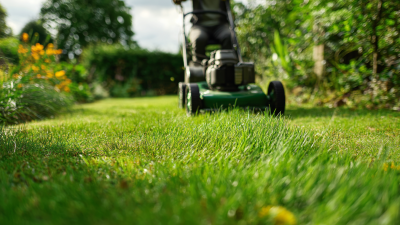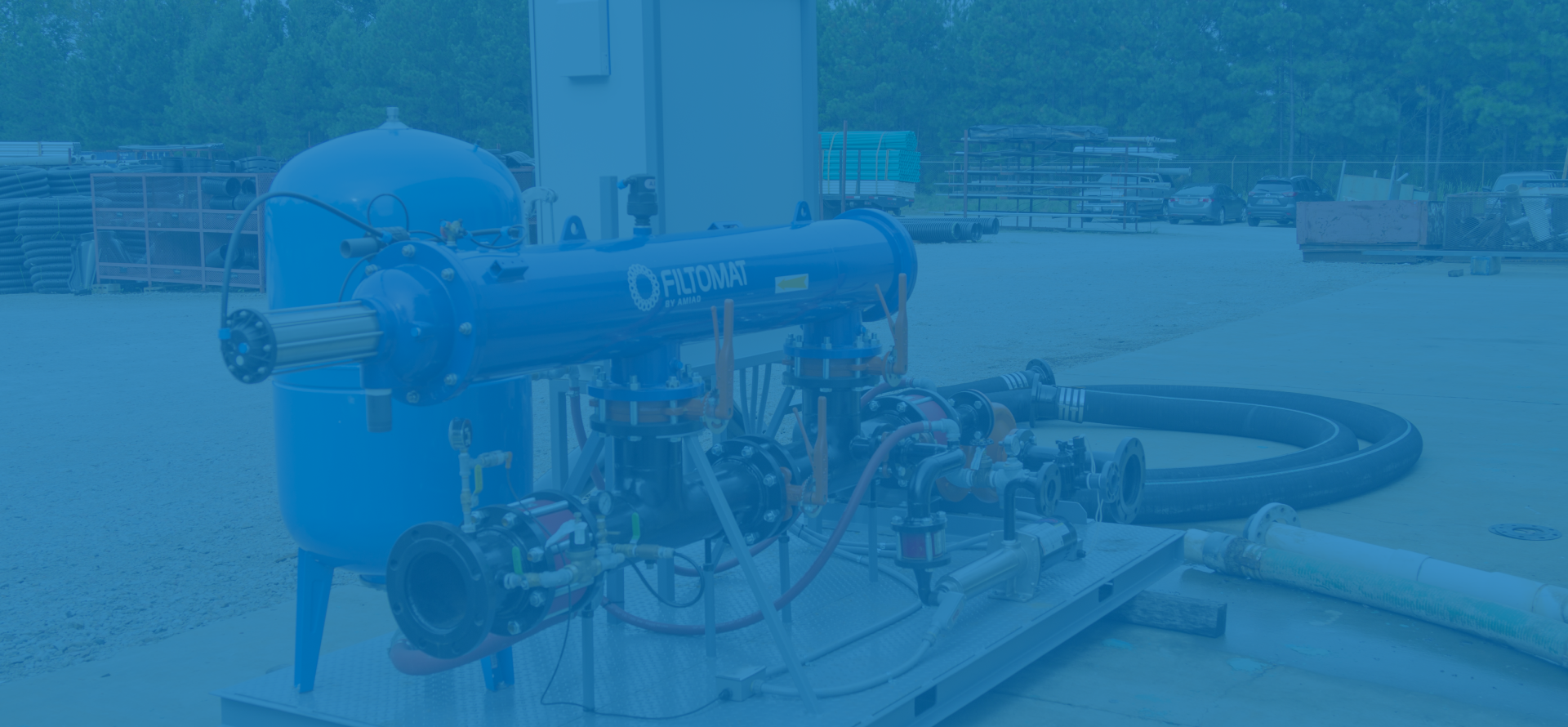Transform Your Garden: The Science Behind Choosing the Perfect Outdoor Fountain
Outdoor fountains are more than just aesthetic additions to garden spaces; they represent a significant shift in landscaping practices that prioritizes tranquility and ecological benefits. A report by the National Association of Landscape Professionals indicates that up to 60% of homeowners are investing in water features, drawn by their ability to enhance property value and promote relaxation. The soothing sounds of trickling water can reduce stress levels and create a serene outdoor environment. Additionally, the presence of outdoor fountains can attract beneficial wildlife, such as birds and butterflies, contributing to a balanced ecosystem within residential landscapes. As designers and homeowners alike explore the myriad possibilities of outdoor fountains, understanding the science behind their selection becomes crucial to transforming any garden into a peaceful retreat.

Understanding the Benefits of Outdoor Fountains for Your Garden
Outdoor fountains can elevate your garden experience by offering both aesthetic appeal and practical benefits. The soothing sound of flowing water promotes relaxation, serving as a natural stress reliever. This auditory backdrop can drown out unwanted noise from nearby roads or urban settings, creating a serene oasis in your backyard. Furthermore, the visual allure of a beautifully designed fountain can serve as a focal point, drawing the eye and enhancing the overall landscape.
In addition to their calming effects, outdoor fountains play a vital role in promoting local biodiversity. The presence of water attracts various birds, butterflies, and other wildlife, enriching the ecosystem within your garden. Notably, fountains also help maintain humidity levels, which can be particularly beneficial during hot summer months, creating a cooler microclimate. By choosing the right fountain, you not only transform your garden aesthetically but also contribute positively to the environment, making it a more vibrant and lively space.
Transform Your Garden: The Benefits of Outdoor Fountains
This chart illustrates the various benefits of outdoor fountains in gardens, highlighting their impact on air quality, aesthetics, relaxation, and wildlife attraction.
Exploring Different Types of Fountains: Styles and Materials
When transforming your garden, selecting the right outdoor fountain involves understanding the various styles and materials available. Fountains come in a plethora of designs, from classical tiered structures to modern minimalist pieces. Each style brings its own aesthetic value, enhancing the overall look of your garden. For instance, a traditional stone fountain may evoke a sense of timeless elegance, while a sleek, metal fountain can introduce a contemporary touch. The visual appeal, however, is just the beginning; the sound of flowing water can create a serene atmosphere, making the choice of style even more impactful.

In addition to style, the materials used in fountain construction significantly influence durability and maintenance. Common materials include natural stone, concrete, ceramics, and metal. Natural stone, while often more expensive, offers a unique and sophisticated appearance, blending seamlessly with outdoor landscapes. Conversely, metal fountains, like those made from stainless steel, can be lightweight and more resistant to weather conditions. Understanding these options ensures not only a beautiful focal point in your garden but also a lasting addition that suits your lifestyle and preferences.
The Role of Sound in Selecting the Ideal Fountain for Your Space
The sound produced by an outdoor fountain can significantly influence the atmosphere of your garden space. When selecting the ideal fountain, consider how its sound complements the surrounding environment. Fountains can vary from gentle trickles to robust cascades, and each type evokes distinct feelings. A soft bubbling sound can create a serene and tranquil atmosphere, making it perfect for meditation or relaxation. In contrast, a more forceful water flow produces invigorating, dynamic sounds that can energize a space and mask undesirable background noise.
Moreover, the scale and placement of your fountain will affect its acoustic impact. A larger fountain set against a backdrop of dense foliage may amplify the sound, creating an immersive experience. Alternatively, a smaller fountain in an open area may produce a more muted effect, allowing for a peaceful retreat. It is essential to observe how sound travels in your garden and how it interacts with other elements, such as your home or nearby structures. By carefully considering the auditory characteristics of your chosen fountain, you can enhance your outdoor space and create a harmonious blend of sound and scenery.
Transform Your Garden: The Science Behind Choosing the Perfect Outdoor Fountain
| Fountain Type | Sound Level (Decibels) | Water Flow Rate (GPH) | Ideal Space Size (Sq Ft) | Placement Recommendation |
|---|---|---|---|---|
| Wall Fountain | 50-70 | 30 | Small (100-200) | Near seating area |
| Tiered Fountain | 60-80 | 50 | Medium (200-400) | Focal point in garden |
| Bubbling Rock Fountain | 40-60 | 20 | Small (100-250) | Natural landscape |
| Pond Fountain | 70-90 | 100 | Large (400+) | In the center of a pond |
| Solar Fountain | 30-50 | 15 | Small (80-150) | Sunny spots in garden |
Factors to Consider: Size, Scale, and Placement of Your Fountain
When selecting the perfect outdoor fountain for your garden, understanding the significance of size, scale, and placement is essential. The size of the fountain should harmonize with the dimensions of your outdoor space; a large, imposing fountain could easily overwhelm a small garden, while a petite feature might get lost in a vast landscape.
Consider the overall proportions of nearby plants, structures, and pathways to ensure your fountain becomes a cohesive part of the environment rather than a jarring addition.
Scale is closely linked to size but focuses more on the visual impact and balance within the garden. A fountain should complement other elements in the area, creating a sense of unity. If the surrounding features are towering and bold, a fountain with a more prominent stature will enhance the space. Conversely, if the garden leans towards a delicate aesthetic, a smaller, intricately designed fountain might be more appropriate.

Maintenance Tips for Keeping Your Garden Fountain in Top Condition
Maintaining your garden fountain is essential for ensuring its longevity and aesthetic appeal. Regular cleaning is the cornerstone of fountain maintenance. Over time, algae, dirt, and debris can accumulate, detracting from the beauty of the water feature. To keep your fountain in pristine condition, use a soft brush to gently scrub all surfaces, especially in hard-to-reach areas where buildup is more likely to occur. For stubborn stains, a mixture of water and vinegar can work wonders without harming the fountain’s material.
Another important aspect of maintenance is monitoring the water level. Water evaporation can lead to a decrease in water levels, which may cause the pump to run dry and become damaged. Regularly check and refill the fountain as needed, particularly during hot weather or periods of little rainfall. Additionally, keep an eye on the pump's performance. If you notice reduced water flow or strange noises, it may be time for a thorough cleaning or pump replacement. With these simple maintenance tips, your outdoor fountain can remain a stunning focal point in your garden for years to come.
Related Posts
-

12 Exceptional Outdoor Fountains to Transform Your Garden Oasis
-

What Makes Grass Fertilizer Essential for a Healthy Lawn
-

2025 Trends in Smart BBQ Island Technologies and Their Impact on Outdoor Cooking Efficiency
-

7 Secrets to Selecting the Best Sprinkler System Installation for Your Landscape
-

Exploring 2025 Tech Trends to Elevate Your Outdoor Grill Station Experience
-

Discovering Quality Suppliers for Best Barbecue Grills with Effective Sourcing Techniques
Stay Connected
Sign up today to keep up with the newest information from one of the Southeast’s leading suppliers of fluid handling equipment!








